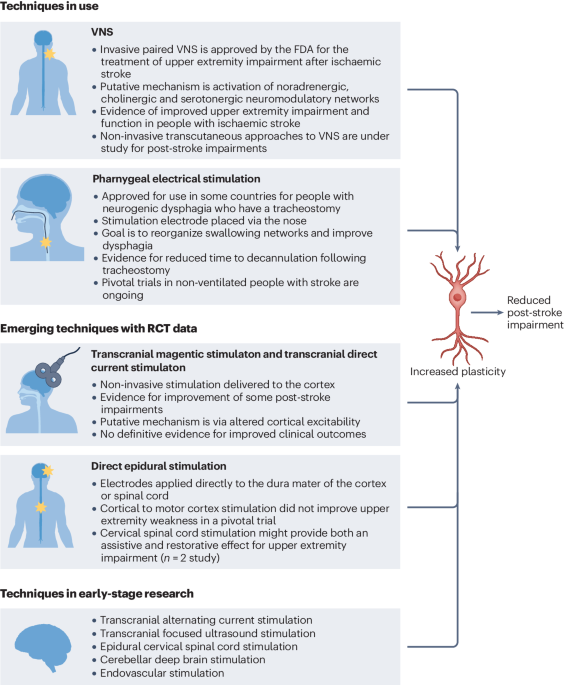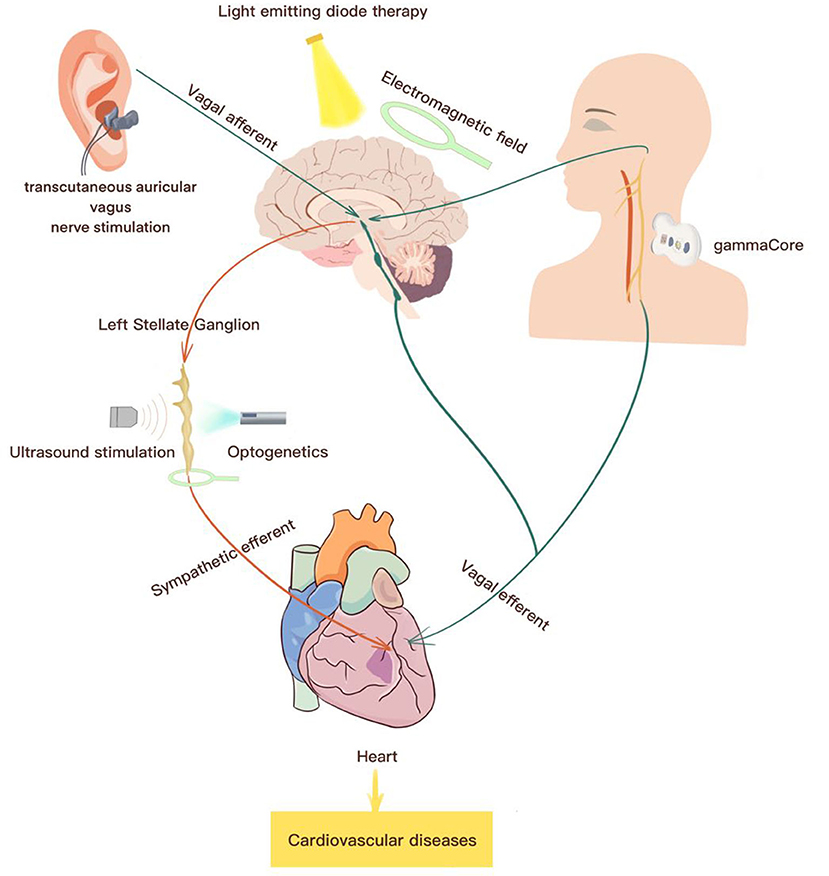Non-Invasive Neurostimulation: Reviews, Safety, and Effectiveness
At NeuroTechInsider.com, we don’t just chase buzzwords — we unpack the science, compare real-world experiences, and give you the truth behind the most promising non-invasive neurostimulation devices out there. From Apollo Neuro to NeuroVIZR, we’ve tested and reviewed the latest tech helping people like you combat insomnia, stress, burnout, and brain fog — with no pills and no fluff.
So what exactly is non-invasive neurostimulation, and why are so many sleep-deprived, anxious, and cognitively drained folks turning to it as a solution? Let’s break it down — with data, visuals, and lived insight.
What Is Non-Invasive Neurostimulation?
Non-invasive neurostimulation (NIN) refers to a set of techniques that stimulate or modulate brain activity without surgery or implanted hardware. These methods use tools like electrical currents, magnetic fields, or low-frequency sound/light waves — typically delivered through external devices worn on the head, wrist, or chest — to influence the nervous system.

These tools are backed by emerging neuroscience and are especially attractive because they’re:
- Drug-free: no side effects, no dependency.
- Portable: many can be used at home, during work, or even while sleeping.
- Versatile: targeting issues like depression, chronic pain, anxiety, cognitive decline, and more.
“The brain is not a static organ. With the right signals, we can coax it into healthier rhythms — gently, non-invasively, and effectively.”
Why Interest in Non-Invasive Methods Is Skyrocketing
Let’s be real: traditional solutions for mental and neurological health have their limits. Medications take time to work (if at all), side effects can be brutal, and therapy — while powerful — often lacks physiological intervention. That’s where NIN steps in.
The market has exploded with new options — from medical-grade transcranial magnetic stimulation (TMS) to at-home transcranial direct current stimulation (tDCS), CES devices, and photobiomodulation tools.
And the science? It’s catching up fast.

According to a 2024 review in Nature Reviews Neuroscience, non-invasive brain stimulation has shown consistent benefits for:
- Reducing depressive symptoms (especially via rTMS)
- Improving motor control in neurological disorders
- Boosting cognition in both clinical and healthy populations
- Managing chronic pain with less medication
Let’s take a closer look at the tools making this possible.
Top Technologies in Non-Invasive Neurostimulation
1. Transcranial Magnetic Stimulation (TMS)
TMS is a clinic-based technology that uses magnetic pulses to stimulate neurons in targeted brain regions. It’s FDA-approved for treatment-resistant depression and is showing promise in anxiety, PTSD, and even nicotine addiction.
What makes TMS stand out?
- Deep, precise brain stimulation
- Sessions typically last 20–40 minutes
- Minimal side effects (mainly scalp discomfort)
However, it’s expensive and requires in-person visits over several weeks — which has led to growing demand for portable alternatives.
2. Transcranial Direct Current Stimulation (tDCS)
tDCS involves placing electrodes on the scalp and delivering a low electrical current to specific areas of the brain. It’s safe, budget-friendly, and often used at home for:
- Focus and cognitive enhancement
- Anxiety reduction
- Post-stroke motor recovery

Platforms like Flow Neuroscience are leading the charge in user-friendly, clinically guided tDCS devices for depression. That said, many users report mild discomfort from electrode pads and a slight tingling or itching sensation during sessions.
What About DIY Users?
There’s a booming community of DIY tDCS users who purchase devices online and run experiments at home. While that might sound sketchy, the core challenge here isn’t necessarily danger — it’s the lack of oversight, support, and structure. NeuroTechInsider always recommends users work with certified protocols or devices backed by published trials and safety data.
3. Vagus Nerve Stimulation (nVNS)
Non-invasive vagus nerve stimulation (nVNS) is another growing star in the neurostimulation space. It’s especially effective for migraine sufferers and those dealing with cluster headaches.

Research from Frontiers in Physiology found that handheld nVNS devices can reduce migraine days and intensity when used regularly — without the side effects of prescription drugs.
Notable devices in this category include:
- gammaCore Sapphire™: FDA-approved for cluster headaches
- Sensate: targets vagal tone for relaxation and parasympathetic balance
Next Up: Clinical Results, Real-World Feedback & What It All Means
In the next section, we’ll dig deep into how these technologies are performing across various conditions, what patients are saying, and how you can navigate the landscape with confidence and clarity.
Stay tuned — or subscribe to our NeuroTechInsider updates to get the next chapter straight to your inbox.
Clinical Effectiveness Across Conditions
The true test of any neurotech device isn’t the buzz — it’s the benefit. At NeuroTechInsider.com, we go beyond specs and marketing to explore how non-invasive neurostimulation performs where it matters: real-world outcomes.
Mental Health: Depression & Anxiety
Multiple studies have confirmed that high-frequency rTMS (repetitive transcranial magnetic stimulation) can significantly reduce depressive symptoms, even in treatment-resistant cases. A meta-analysis from 2023 concluded that TMS had a strong effect size for depression remission compared to sham treatments.
Meanwhile, tDCS shows moderate success for milder depression and anxiety — particularly when paired with behavioral interventions. Apps like Flow Neuroscience integrate cognitive behavioral therapy (CBT) frameworks into their platforms, helping users build better habits alongside stimulation.
Pain Management & Neurological Disorders
In chronic pain conditions like fibromyalgia or neuropathy, anodal tDCS and high-frequency rTMS have been linked to decreased pain intensity. A 2019 study on patients with neuropathic pain showed that rTMS over the motor cortex reduced pain for several days post-session — though effects were transient, requiring ongoing treatment.
Migraine, Headache & Cluster Conditions
Devices like Sensate and gammaCore are changing how we think about migraine care. Non-invasive VNS, in particular, has been FDA-cleared for episodic and chronic cluster headaches, offering a non-drug pathway to relief.
- Reduced migraine days
- Lower medication use
- Fewer side effects than pharmaceuticals
Cognitive & Motor Enhancement
Looking to sharpen your mind or recover after injury? Enter cognitive neurostimulation. Both TMS and tDCS have shown measurable improvements in executive function, decision-making, and motor coordination.
Studies on children with cerebral palsy show that tDCS sessions can enhance upper limb functionality and support rehab goals. On the cognitive front, many neurohackers use devices like NeuroVIZR or Apollo Neuro to boost alertness, creativity, and flow states.
“It’s not about making you a superhuman overnight — it’s about optimizing your brain’s natural rhythm, safely and consistently.”
User Experiences, Comfort & Perceived Value
How Do People Feel Using These Devices?
From our testing and user-submitted feedback at NeuroTechInsider, here’s what people commonly report:
- High safety confidence: Especially with FDA-cleared devices like TMS and gammaCore
- Mild discomfort: tDCS electrodes may cause tingling, some headset users report pressure or warmth
- Desire for convenience: Many want home-use models to replace in-clinic visits
- Placebo awareness: Users note that expectations influence results, especially with tDCS
In one recent review of Audicin AVE headset, users highlighted improvements in sleep latency and deep sleep duration — even though the results varied across individuals.
DIY vs. Regulated Use
We get it — the DIY crowd is growing. You can easily buy tDCS kits or vagus stimulators online, but should you?
While home-use devices are legit for many, we strongly advise against untested protocols or knockoff brands. Always choose devices with published research or peer-reviewed clinical trials. And when possible, consult a neuro-specialist.
Strengths & Weaknesses: A Balanced View
| Strengths | Limitations |
|---|---|
| Safe, non-invasive, and well-tolerated | Not all effects are long-lasting — repeat sessions often needed |
| Effective for depression, pain, and cognitive fatigue | Varied evidence quality depending on the device |
| Growing support for home use (e.g., tDCS, CES) | Discomfort or skin irritation for some users |
| No drugs, no side effects | Access can be costly or limited by insurance |
Looking Ahead: The Future of Neurostimulation
What’s Coming?
- Personalized protocols using EEG feedback and machine learning
- More insurance coverage and reimbursement models
- Stricter regulations to separate effective devices from gimmicks
Platforms like NeuroVIZR and Sensate are already rolling out adaptive algorithms that match stimulation intensity to biometric feedback. This is where the field is heading — and fast.
Conclusion: Should You Try Non-Invasive Neurostimulation?
If you’re battling burnout, stuck in sleep debt, or feel like your brain’s running on 20%, this tech is worth your attention. Non-invasive neurostimulation isn’t a magic wand — but it’s one of the most exciting frontiers in wellness and mental performance today.
We recommend:
- Start with FDA-approved or clinically-backed devices
- Use regularly — consistency is key
- Track results and adjust your usage
Want more personalized breakdowns, device rankings, and hands-on reviews? Join our NeuroTechInsider community — and get smart about the future of your brain.
FAQs About Non-Invasive Neurostimulation
Q: Is neurostimulation safe for daily use?
A: Yes, most devices designed for home use (like tDCS, CES, or AVE headsets) are safe when used according to guidelines. Always check for FDA or CE certifications.
Q: Can it help with sleep problems?
A: Absolutely. Devices like Apollo Neuro and Audicin have shown promising sleep support by modulating parasympathetic activity and promoting deep rest.
Q: Do I need a prescription?
A: Some devices (like rTMS) require a clinical setting. Others (like tDCS, CES, and light-sound wearables) are consumer-ready and available online.
Q: What are the side effects?
A: Mild skin irritation, scalp tingling, or warmth during stimulation are the most common. No severe side effects are typically reported when used correctly.
Ready to go deeper? Browse our expert reviews:
- Apollo Neuro: Wearable VNS for Stress Relief
- NeuroVIZR: 40Hz Light-Sound Stimulation for Brain Health
- Audicin: Sleep-Enhancing Audio-Visual Entrainment
NeuroTechInsider.com is your hub for no-hype, science-backed insight into the world of non-invasive brain tech.
https://www.frontiersin.org/files/Articles/550578/fphys-11-550578-HTML/image_m/fphys-11-550578-g002.jpg
